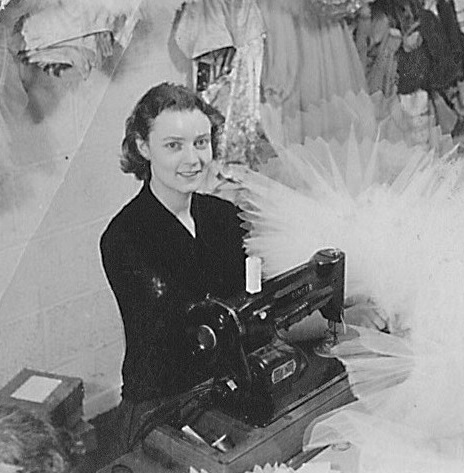My mother was a great gardener. She had a green thumb and everything she planted, grew. True, we nourished the soil with used tea leaves, soot from the chimney, and horse manure collected from the street after the horse drawn milk cart had gone by. Mother always had a shovel ready to collect the horse’s gift. She grew roses everywhere. Over archways in the back yard, and rose bushes in the front yard. There were many varieties and colors, not to mention the scents. Roses still remain my favorite flower. Flowers of every kind grew everywhere else.
Then came the war. This would cause a complete upheaval of our back yard.
A pathway led up to a shed in the right hand corner of the garden. The shed was made of planks of wood with a tar paper roof. The shed held all the garden tools, a workbench, and acted as my dad’s man cave. The shed was small, the workbench placed under the small window, with a vise clamped to it and a couple of she lasts resting on top. Dad would repair our shoes here putting on new rubber soles or adding metal tips to the heels to save the wear and tear. Against the back wall was a shovel, fork, hoe, lawn mower, watering cans and flower pots. Now with rationing of food, the right side of the garden was dug up and rows of vegetables planted. This required much weeding, much to my dismay, the one member of the family with a black thumb. The hoe became my weapon of war, killing the weeds. This was a time when it was ‘all hands on deck’ to win the war.
The next transformation came with the instillation of the Anderson shelter. One day all the parts were delivered to every household in our street and stacked up in our back yards. A foundation hole had to be dug out, and with the help of neighbors, we began our foundation. This was located at the back of the garden up against the 17th century wall that surrounded the 11th century church. The wall is all that remains of the manor house that once graced my home village. As we dug away, I learned that there was a Roman road under this part of the garden. I dug energetically hoping to unearth coins or treasure, but also with a little fear. The churchyard was just on the other side of the wall. We dug deep and one day struck metal. We carefully removed the black moist earth, and hauled the treasure out…an old rusty bicycle someone had buried in the garden. It was rusty beyond repair, and i wonder to this day why it was buried, when the rag and bone man came around every week with his horse and cart collecting anything he could recycle.
Soon the hole was deep enough to set up the shelter. The pieces of corrugated iron were bolted together forming an arched roof. There was a metal door set in a cut out frame shape that butted up against the curved shell. The door led down a couple of steps into the shelter where there were four bunk beds fitted to the sides, two up and two down. All the earth we had dug out was now replaced over the curved roof, covering the shelter like a little hill. If the door had been round it would have made a little Hobbit house. The transformation of the garden was complete, and as the war continued the grass grew over the roof and a dandelion or two gave it character. I set about decorating the inside walls with cut out pictures of Snow White. But nothing could transform the inside of that dark musky shelter that was to hold our fearful shaking bodies during the air raids.
